This is a short list with summaries of 6 important studies relevant to humane community cat management. These articles are based on real data, peer-reviewed, and published in scientific journals. Not all of these articles are free to view, but you can usually get a free copy when you email the corresponding author. There are other published studies that can lend support to humane practices towards community cats, but this gets you started in supporting TNR with published data. I also recommend the Alley Cat Allies website, the Vox Felina website, and the book “TNR: Past, Present, and Future” by Ellen Perry Berkeley.
MEASURED IMPACTS OF TRAP-NEUTER-RETURN (TNR)
Levy, J.K., Isaza, N.M., and Scott, K.C. “Effect of high-impact targeted trap-neuter-return and adoption of community cats on cat intake to a shelter.” The Veterinary Journal, Available online 5 May 2014.
This study shows the impacts of a 2-year TNR program in a single zip code with a high intake rate for cats at the shelter. The program fixed 2366 cats and the shelter noted a 66% decrease in cat impoundment during that time. In a similar area without this high level of TNR, the intake rate only decreased 12%. This is the most recent study published!
Levy, J.K., Gale, D.W., and Gale, L.A. (2003) “Evaluation of the effect of a long-term trap-neuter-return and adoption program on a free-roaming cat population.” Journal of the American Veterinary Medical Association 222(1), 42-46.
This study shows that long-term TNR efforts lead to a decrease in a community cat population and eventually do prevent new litters from being born in the population, especially when new arrivals are also fixed as soon as possible. This study uses data collected on the same population over 11 years of TNR and adoption of kittens and socialized cats from the population. Between 1996 and 2002, the population decreased from 68 to 23 cats (66%). Four years after TNR was implemented, there were no kittens observed in the population.
MEASURED PREVALENCE OF INFECTIONS AMONG FERAL CATS
Wallace, J.L, and Levy, J.K. (2006) “Population characteristics of feral cats admitted to seven trap-neuter-return programs in the United States.” Journal of Feline Medicine and Surgery 8(4), 279-284.
This study shows that the vast majority of feral cats are not diseased to the point that euthanasia is recommended and demonstrates how necessary TNR is for community cats because of the data on pregnant female cats. The researchers looked at data from TNR of 103,643 feral cats throughout the US from 1993 to 2004 to determine population characteristics of community cats. In this large sample of cats, 15.9% of female cats were pregnant at their spay surgery with an average of 4.1 fetuses per litter. Only 0.4% of the cats admitted to the TNR programs were euthanized due to serious debilitating conditions. There were very few differences between populations by geographic area.
Luria, B.J., Levy, J.K., Lappin, M.R., Breitschwerdt, E.B., Legendre, A.M., Hernandex, J.A., Gorman, S.P., and Lee, I.T. (2004) “Prevalence of infectious diseases in feral cats in Northern Florida.” Journal of Feline Medicine and Surgery 6(5), 287-296.
This study concluded that the prevalence rates of infections in feral cats are the same or lower than the prevalence rates published for owned cats in the United States. This study was based on testing 553 feral cats in Northern Florida for FIV, Mycoplasma haemofelis, feline leukemia virus, Bartonella henselae, and M. hameominutum. The authors note that “feral cats assessed in this study appear to be of no greater risk to human beings or other cats than pet cats” for transmission of infectious diseases.
TNR RESOURCES SHOULD NOT BE WASTED ON FIV TESTS
Lee, I.T., Levy, J.K., Gorman, S.P., Crawford, P.C., and Slater, M.R. (2002) “Prevalence of feline leukemia virus infection and serum antibodies against feline immunodeficiency virus in unowned free-roaming cats.” Journal of American Veterinary Medical Association 220(5), 620-622.
This study shows that the prevalence rates of FeLV infection and FIV antibodies in unowned free-roaming cats are similar to those of owned cats in the United States. The researchers used test data for a total of 1876 unowned free-roaming cats in Raleigh, NC and Gainesville, FL for FeLV and FIV. It found an overall prevalence of 4.3% for FeLV and 3.5% for FIV.
Lister, A.L. (2014) “Transmission of feline immunodeficiency virus (FIV) among cohabiting cats in two cat rescue shelters.” The Veterinary Journal 201(2), 184-188.
This study showed no transmission of FIV after years of FIV+ and non-FIV cats living together and sharing food and litterboxes. It also showed that all 19 kittens from 5 FIV+ mothers in the study tested negative for FIV. This gives support for the lack of FIV transmission in stable mixed households and between mothers and kittens.
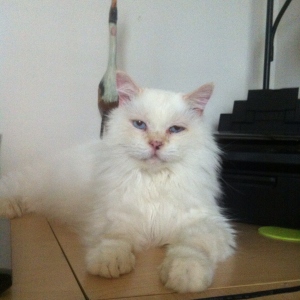
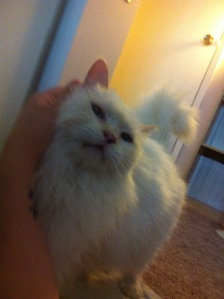
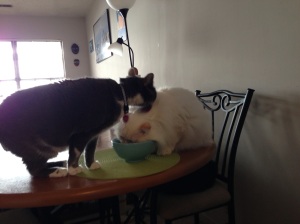
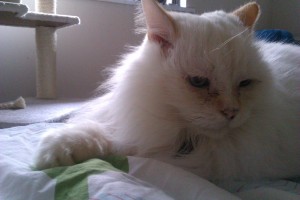
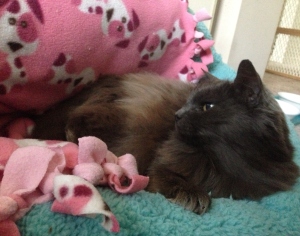
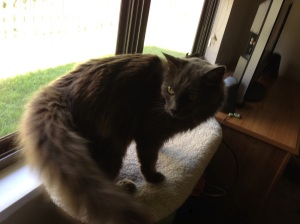
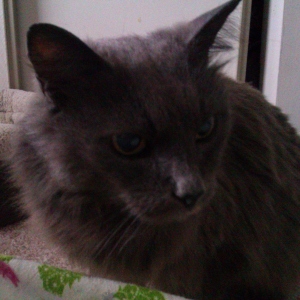
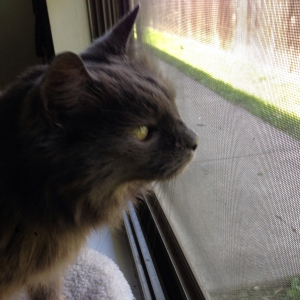
Recent Comments